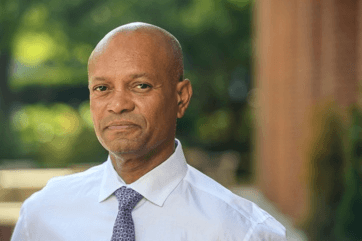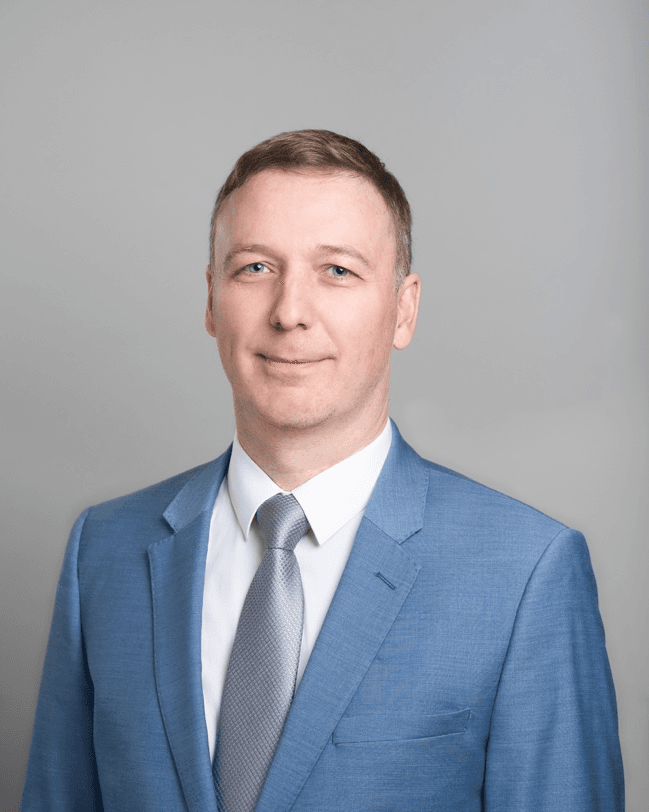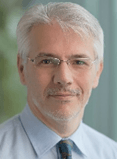Title: Neuromorphic Engineering in Healthcare
Presenter: Ralph Etienne-Cummings1, Ph.D., FIEEE, FAIMBE, FASI
Collaborators: Khaled Aboumerhi1, Amparo Guemes-Gonzales3, Ph.D., Brandon Liu1, Francesco Tenore2, Ph.D.
Affiliation: 1Department of Electrical and Computer Engineering and 2Applied Physics Laboratory, Johns Hopkins University, Baltimore, MD, USA; 3Department of Engineering, University of Cambridge, U.K.
Abstract
Recently, there has been a growing demand for miniaturization, low power consumption, quick treatments, and non-invasive clinical strategies in the healthcare industry. To meet these demands, healthcare professionals are seeking new technological paradigms that can improve diagnostic accuracy while ensuring patient compliance. Neuromorphic engineering, which uses neural models in hardware and software to replicate brain-like behaviors, can help usher in a new era of medicine by delivering low power, low latency, small footprint, and high bandwidth solutions. This presentation provides an overview of recent neuromorphic advancements in medicine, including medical imaging and cancer diagnosis, processing of biosignals for diagnosis, and biomedical interfaces, such as motor, cognitive, and perception prostheses. For each area, we provide examples of how brain-inspired models can successfully compete with conventional artificial intelligence algorithms, demonstrating the potential of neuromorphic engineering to meet demands and improve patient outcomes. We will focus on a spinal-cord injuries mitigation and neural stimulation as concrete examples of where neuromorphic engineering was used. Lastly, we discuss current struggles in fitting neuromorphic hardware with non-neuromorphic technologies and propose potential solutions for future bottlenecks in hardware compatibility.
Biography

Ralph Etienne-Cummings, an IEEE, AIMBE and ASI Fellow, received his B. Sc. in physics, 1988, from Lincoln University, Pennsylvania. He completed his M.S.E.E ('91). and Ph.D. ('94) in electrical engineering at the University of Pennsylvania. Dr. Etienne-Cummings is the Vice-Provost for Faculty Affairs, previous (7/2014 – 7/2020) Chairman of Department of Electrical and Computer Engineering and the Julian S. Smith Professor of Electrical Engineering at Johns Hopkins University (JHU). He was the founding Director of the Institute of Neuromorphic Engineering. He has served as Chairman of various IEEE Circuits and Systems (CAS) Technical Committees and was elected as a member of CAS Board of Governors. He also serves on numerous editorial boards and was the Deputy Editor in Chief for the IEEE Transactions on Biomedical Circuits and Systems. He is the recipient of the NSF’s Career and Office of Naval Research Young Investigator Program Awards, among many other recognitions. He was a Visiting African Fellow at U. Cape Town, Fulbright Fellowship Grantee, Eminent Visiting Scholar at U. Western Sydney and has also won numerous publication and research awards. He was also recognized as a “ScienceMaker”, an African American history archive and for the “Indispensable Roles of African Americans at JHU” exhibit. In 2021 was elected to the Johns Hopkins Homewood Academic Council, which is the highest body responsible for maintaining excellence in research, teaching and service at the University. He has published nearly 400 peer reviewed article, books/chapters and patents/applications on his work.
Title: Artificially-Intelligent Closed-Loop Neurostimulators for the Treatment of Neurological Disorders
Presenter: Roman Genov
Affiliation: Department of Electrical and Computer Engineering, University of Toronto
Abstract
The rapid advancements in artificial intelligence and neuroscience have led to ground-breaking innovations in the field of medical devices, particularly in the development of artificially-intelligent closed-loop neurostimulators. This plenary talk delves into the transformative potential of these neurostimulators, highlighting their ability to revolutionize healthcare by offering personalized and precise therapeutic interventions for a range of neurological disorders.
Neurological disorders, such as epilepsy, paralysis and chronic pain, have a profound impact on the quality of life for millions worldwide. Traditional treatments often involve generalized interventions that do not adapt to the specific patient or their changing condition. Artificially-intelligent closed-loop neurostimulators have emerged as an effective solution that harnesses the power of machine learning to provide real-time monitoring, analysis, and responsive stimulation tailored to an individual's neural activity patterns.
This talk will explore the technical implementations of these neurostimulators, deployed both in the central and in the peripheral nervous systems. Such neurostimulators integrate neural sensing technologies, energy-efficient machine learning algorithms, and adaptive stimulation delivery paradigms. By continuously monitoring the neural electrical activity, these devices can swiftly detect abnormalities or fluctuations, enabling timely adjustments to the stimulation parameters. This closed-loop approach ensures that therapy adapts optimally to each specific patient and remains effective as the patient's condition evolves over time.
As we stand at the cusp of a new era in healthcare, the potential of artificially-intelligent closed-loop neurostimulators to transform patient outcomes is undeniable. This plenary talk will not only highlight the scientific and technological advancements behind these devices but will also emphasize their broader implications for reshaping medical practice. By embracing the convergence of artificial intelligence and neuroscience, we have the opportunity to unlock a future where personalized, adaptable, and effective therapies become the cornerstone of neurological disorder treatments.

Roman Genov received the B.S. degree in Electrical Engineering from Rochester Institute of Technology, NY in 1996 and the M.S.E. and Ph.D. degrees in Electrical and Computer Engineering from Johns Hopkins University, Baltimore, MD in 1998 and 2003 respectively.
He is currently a Professor in the Department of Electrical and Computer Engineering at the University of Toronto, Canada, where he is the Director of Intelligent Sensory Microsystems Laboratory and a member of Electronics Group and Biomedical Engineering Group. Dr. Genov’s research interests are primarily in analog and digital integrated circuits and systems for energy-constrained biomedical and consumer sensory applications, such as implantable neural interfaces and computational image sensors.
Dr. Genov is a co-recipient of Jack Kilby Award for Outstanding Student Paper at IEEE International Solid-State Circuits Conference, Best Paper Award of IEEE TRANSACTIONS ON BIOMEDICAL CIRCUITS AND SYSTEMS, Best Paper Award of IEEE Biomedical Circuits and Systems Conference, Best Student Paper Award of IEEE International Symposium on Circuits and Systems, Best Paper Award of IEEE Circuits and Systems Society Sensory Systems Technical Committee, Best Paper Award of IEEE Circuits and Systems Society Biomedical Circuits and Systems Technical Committee, GlobalFoundries Micro-Nanosystems Design Award, Award for Excellence in Microsystems Design Methodology, Brian L. Barge Award for Excellence in Microsystems Integration, MEMSCAP Microsystems Design Award, DALSA Corporation Award for Excellence in Microsystems Innovation, and Canadian Institutes of Health Research Next Generation Award. He has served as a Technical Program Co-chair at IEEE Biomedical Circuits and Systems Conference, a member of IEEE International Solid-State Circuits Conference International Program Committee, and a member of IEEE European Solid-State Circuits Conference Technical Program Committee. He was also an Associate Editor of IEEE TRANSACTIONS ON CIRCUITS AND SYSTEMS-II: EXPRESS BRIEFS and IEEE SIGNAL PROCESSING LETTERS, as well as a Guest Editor for IEEE JOURNAL OF SOLID-STATE CIRCUITS. Currently he is an Associate Editor of IEEE TRANSACTIONS ON BIOMEDICAL CIRCUITS AND SYSTEMS.
Title: Compressive Sensing for Biomedical Applications: Is this a Hammer Looking for Nails?
Presenter: Gianluca Setti
Affiliation: University of Washington, at IBM T. J. Watson Laboratories, and at EPFL (Lausanne)
Abstract
Compressive Sensing (CS) has emerged in the last two decades as a transformative technique capable of revolutionizing the way data is acquired, processed, and reconstructed. CS exploits the inherent sparsity or compressibility of signals, allowing accurate reconstruction from a small number of non-traditional measurements. This principle is particularly relevant in the biomedical field, where acquiring high-quality data can be resource-intensive and time-consuming.
To apply CS, the signals must be acquired in an incoherent way with respect to the sparsity basis, which is classically obtained in practice by acquiring the signal through projection on a random PAM signal with i.i.d. symbols. Performance improvement, in terms of acquisition time/energy reduction, has been obtained using several optimizations directions. This exploits the fact that, while sparsity is not under a system designer’s control, incoherence is. Hence when signals are localized (i.e they preferentially occupy a given subspace, as it is for biosignals) acquisition sequences can be statistically designed to maximize their capability to collect the energy of the samples during the acquisition with the goal of either improving reconstruction accuracy or further compressing the data. The design of innovative acquisition systems is another important aspect of this field: several architecture for CS based systems have been proposed starting from general purpose implementation of Analog-to-Information Converters for signal acquisition from biosensors, to the design of CS-based MRI systems with faster imaging acquisition. In addition, the development of advanced (also Deep Neural Network Based) decoders has also been investigated to improve the reconstruction quality from the compressed measurements.
Aim is this talk is give first an overview of all the elements presented above and to determine which of them have truly caused a breakthrough in the respective area of application, arriving also to commercial products. We will also highlight areas in which this has not been the case, and try understand why the initial promises have not been maintained, especially in terms of ultra-low-power acquisition. Finally, we will show other less known characteristics of CS, such as its ability to eliminate the necessity for pre- or post-acquisition filtering stages or its ability to guarantee some level of privacy in information transmission, which makes the CS signal acquisition paradigm more suitable for applications in the area of biosignal acquisition.

Gianluca Setti received a Dr. Eng. degree (honors) and a Ph.D. degree in Electronic Engineering from the University of Bologna, in 1992 and in 1997. From 1997 to 2017 he was with the Department of Engineering, University of Ferrara, Italy, as an Assistant- (1998-2000), Associate- (2001-2008) and as a Professor (2009-2017) of Circuit Theory and Analog Electronics. From 2017 to 2022, he was Professor of Electronics, Signal and Data Processing at the Department of Electronics and Telecommunications (DET) of Politecnico di Torino, Italy. He is currently Dean of the Computer, Electrical, Mathematical Science and Engineering at KAUST, Saudi Arabia, where is also a Professor of Electrical and Computer Engineering.
Dr. Setti has held various visiting positions, most recently at the University of Washington, at IBM T. J. Watson Laboratories, and at EPFL (Lausanne).
His research interests include nonlinear circuits, recurrent neural networks, statistical signal processing, electromagnetic compatibility, compressive sensing and statistical signal processing, biomedical circuits and systems, power electronics, design and implementation of IoT nodes, circuits and systems for machine learning.
He is the recipient of numerous awards, including the 2004 IEEE Circuits and Systems (CAS) Society Darlington Award, the 2013 IEEE CASS Guellemin-Cauer Award, the 2013 IEEE CASS Meritorious Service Award and the 2019 IEEE Transactions on Biomedical Circuits and Systems Best Paper Award.
He was a Distinguished Lecturer of the IEEE CAS Society (2004-2005 and 2013-2014) of the same Society, a member of the CASS Board of Governors (2005-2008), and served as the 2010 CAS Society President, as well as the 2018 General Chair of the IEEE International Symposium on Circuits and Systems (ISCAS) in Florence, Italy.
In 2012, he was the Chair of the IEEE Strategic Planning Committee of the Publication Services and Products Board (PSPB-SPC) and in 2013-2014 he was the first non North-American Vice President of the IEEE for Publication Services and Products. He is currently serving as the Editor-in-chief of the Proceedings of the IEEE.

